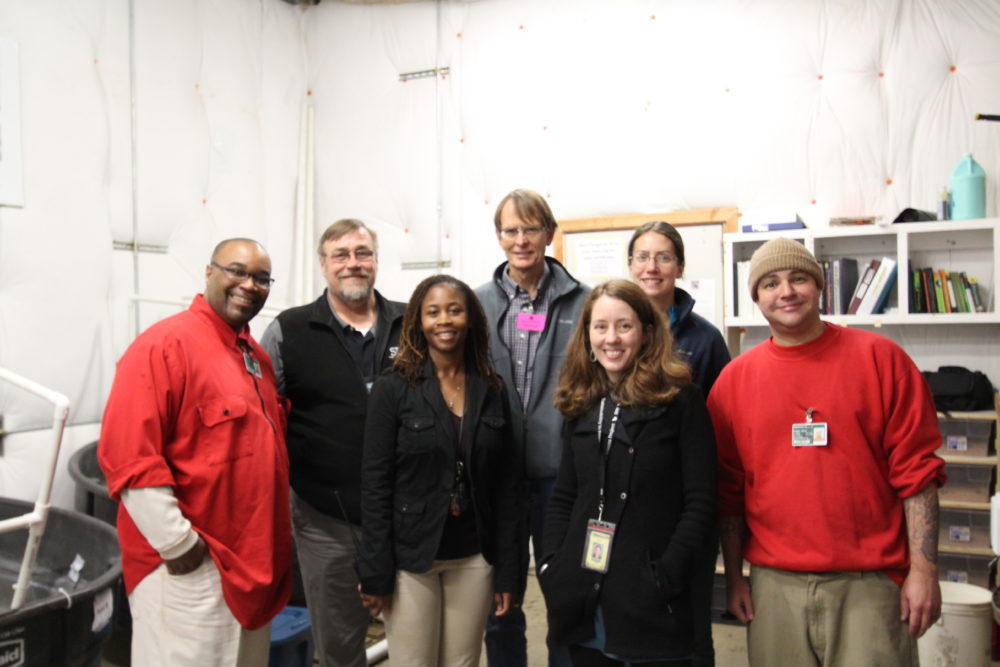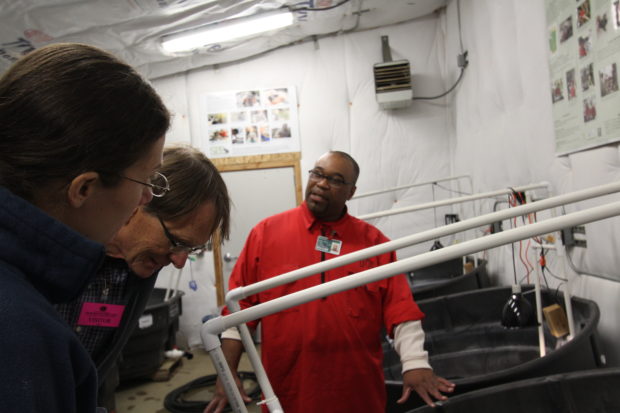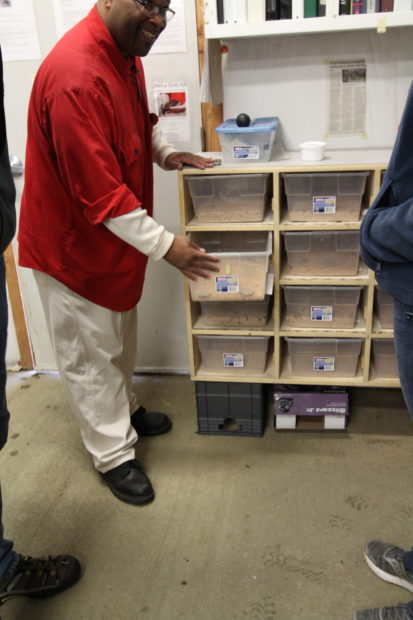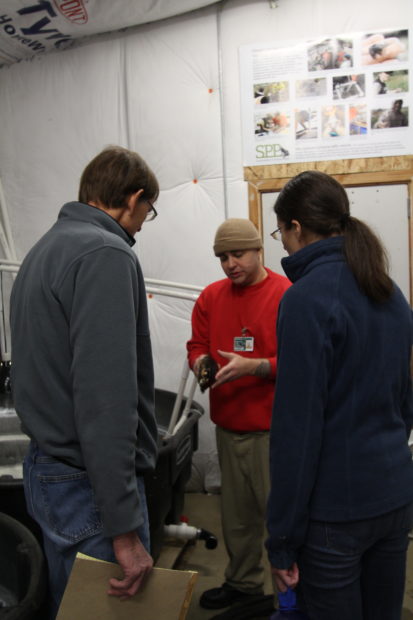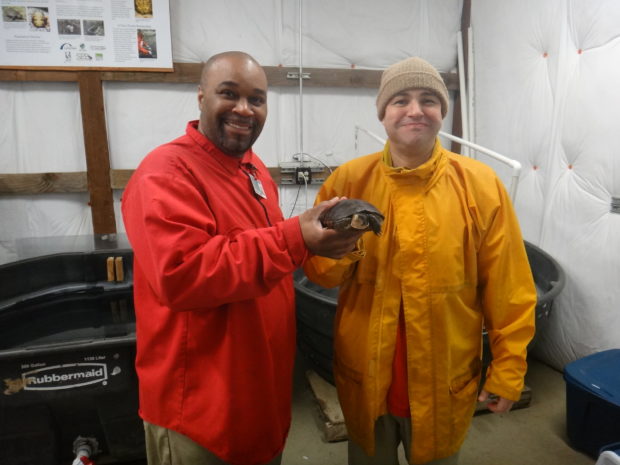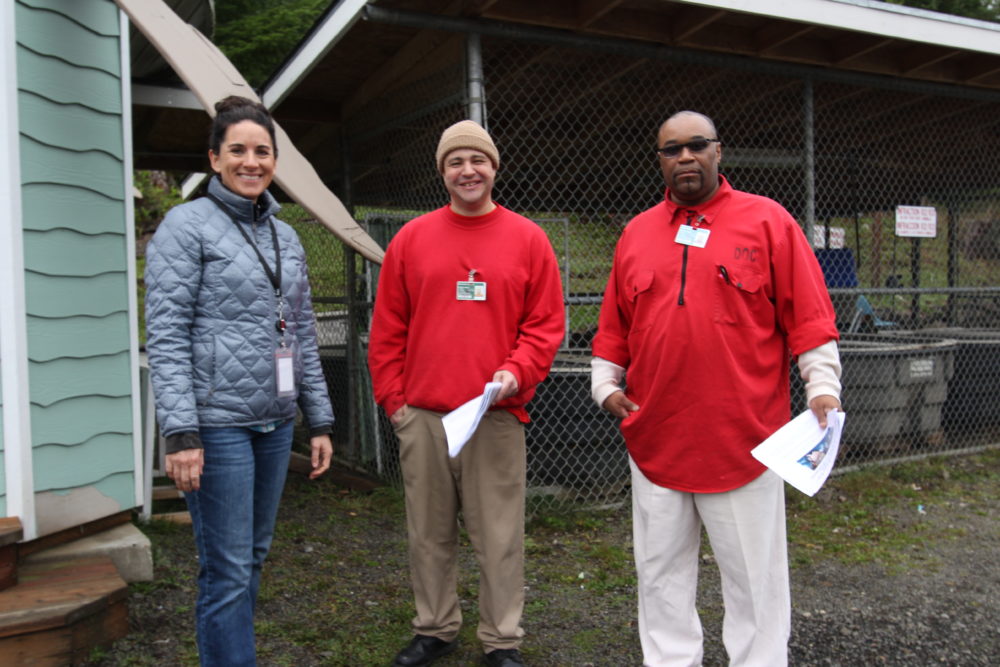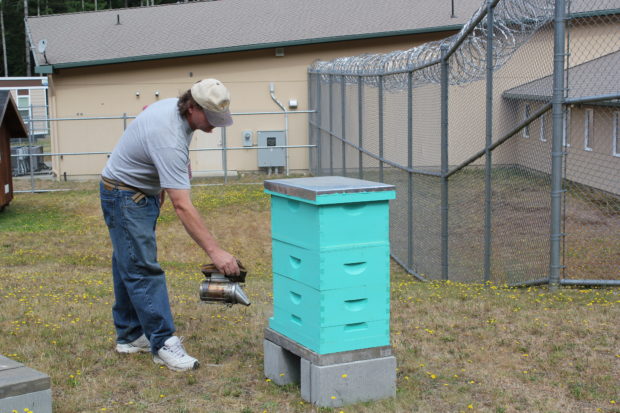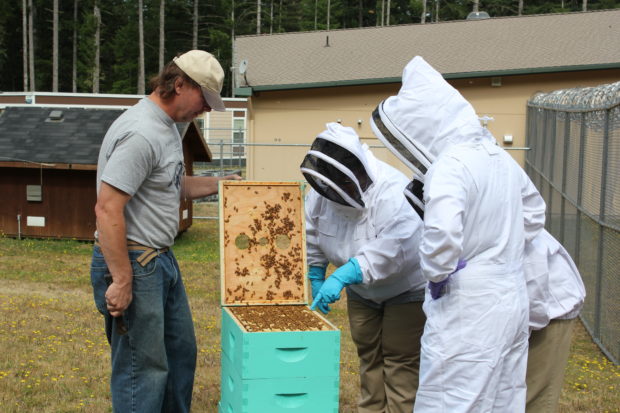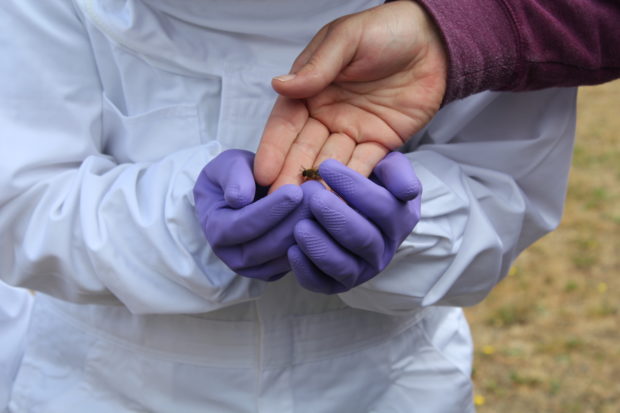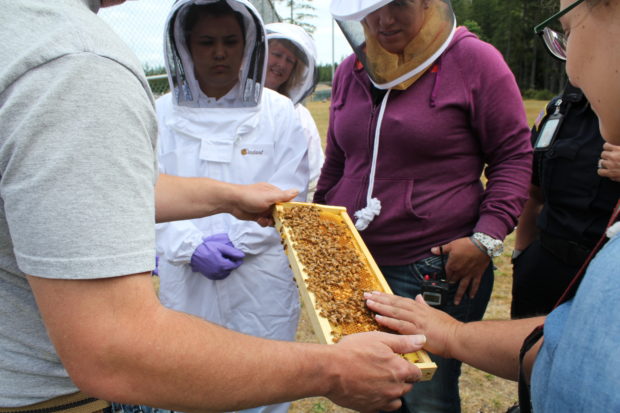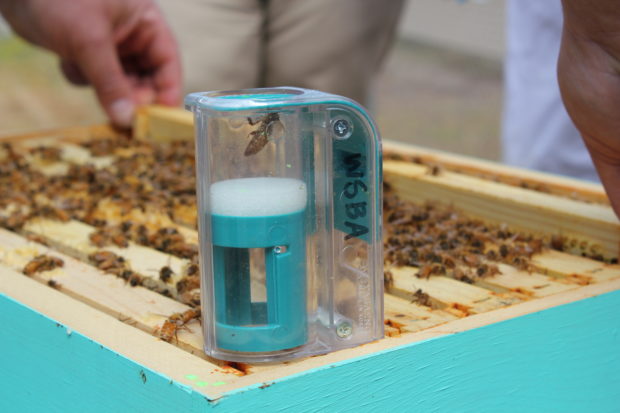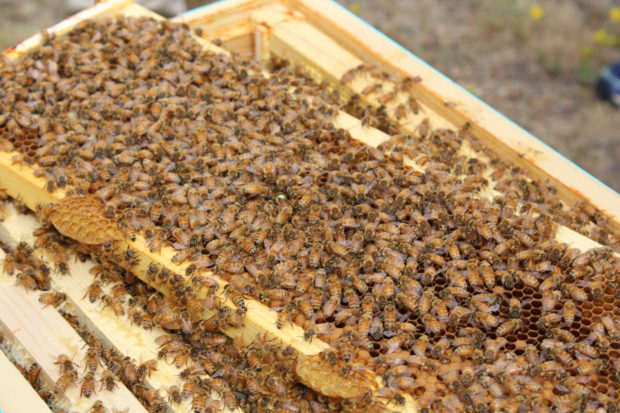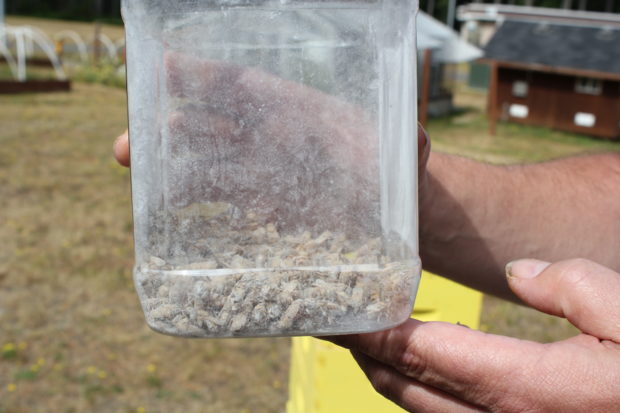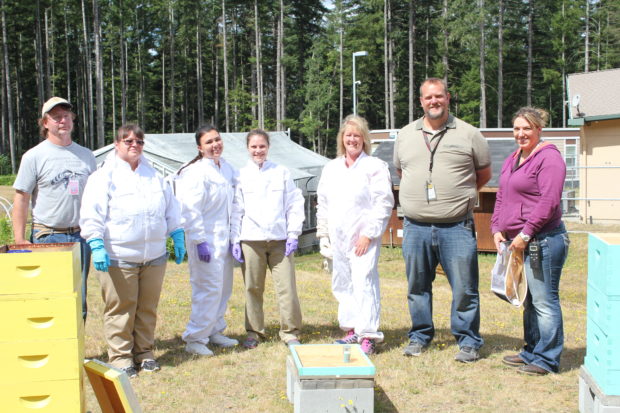Text by Bethany Shepler, SPP Green Track Coordinator
When I first heard about a job opening at the Sustainability in Prisons Project, I couldn’t believe there was a group that combined two of my passions. I called my best friend and excitedly shouted at her all I had learned about SPP. Her response was simply “you’re applying for that, right? Cause it’s perfect for you.”
Well, I applied for the position of Green Track Program Coordinator and practiced for my interview over and over. I would like to think I projected an air of confidence during my interview, but I desperately wanted to make a good impression so I made myself quite nervous. A few days later, I received the call offering me the position! I don’t really remember the call, I just remember being so excited I could hardly breathe.
For the second time in my life, I knew I was on the right path.

Emily Passarelli and Bethany Shepler observe nursery technicians at WCC picking buds from violets that will be used for re-seeding later. Photo by SPP Staff.
Sitting at my desk a few months later, I still know I’m where I’m supposed to be. I still get excited to go to work, I love the challenges this job brings, and I can’t wait to find out what I learn throughout my time here.
Although I don’t get to go to prison as often as my colleagues do, when I do I find that I’m always surprised by how normal everything feels “inside.” I sometimes forget where I am until I see the barbed wire and guard towers.

Group photo of Climate Symposium at SCCC. This was an incredible event about climate change and the actions people can take to mitigate it. Photo by Ricky Osborne.
The thing that surprises me the most is how inspiring the inmates are. They are full of hope. Out of all the inspirational speakers I’ve had the pleasure to listen to in my lifetime, the most powerful voices are those of the incarcerated individuals I work with. I often leave prison feeling hopeful and positive about the state of the world. Regardless of the tweets or breaking news, it’s the people who we’ve locked away that are showing me the way forward.
